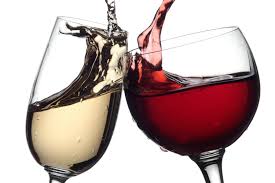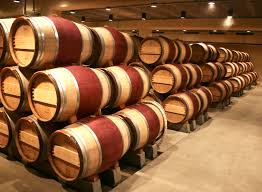I Need Some Fine Wine: Unlocking the Secrets of Fine Wine. If you’re a wine enthusiast or someone who appreciates the art of winemaking, you’ve come to the right place. Whether you’re a novice or a seasoned connoisseur, we aim to provide you with valuable insights and tips to enhance your understanding and enjoyment of fine wine.
I Need Some Fine Wine: Exploring the Magic
Fine wine is more than just a beverage; it’s a blend of history, geography, craftsmanship, and passion. Join the weekly wine presentation where experts pair and discuss fine wine in greater detail.
The process of winemaking involves a delicate balance of factors, including the grape variety, soil composition, climate, viticulture techniques, and the skill of the winemaker. Each bottle of fine wine tells a unique story, encapsulating the essence of its origin and the hands that crafted it. As a result, each bottle is unique, and two labels from various years will have slightly different tastes.
What Makes Wine “Fine”?
The term “fine wine” refers to a wine that has exceptional quality, complexity, and aging potential. It is often produced from specific grape varieties that thrive in particular regions known for their favorable terroir. Fine wines are carefully crafted with meticulous attention to detail, from the cultivation of the vines to the aging process. These wines undergo a transformation over time, developing a range of flavors and aromas that captivate the senses. Discover this unique wine of the month club with fine wine from the USA.
The Art of Wine Tasting
To fully appreciate the nuances of fine wine, it’s important to develop your wine tasting skills. With this in mind, here are some steps to guide you through the tasting process:
- Visual Examination: Observe the wine’s color, clarity, and viscosity. Tilt the glass against a white background to assess the hue and intensity of the wine.
- Aroma Evaluation: Swirl the wine gently to release its aromas. Take a moment to inhale deeply and identify the various scents present, such as fruits, flowers, spices, or oak. You can even use each nostril to check out the variations in smell.
- Taste Analysis: Take a small sip and let the wine coat your palate. Pay attention to the flavors, acidity, sweetness, tannins, and body. Note the balance and complexity of the wine.
- Finish Assessment: Observe the length and persistence of the wine’s aftertaste. A long and satisfying finish is often an indicator of a high-quality wine.
I Need Some Fine Wine: Popular Varieties
There is an incredible diversity of grape varieties in use in the production of fine wines. Each grape variety imparts its unique character and flavor profile to the wine. Here are some of the popular grape varieties you will find in crafting fine wines:
- Cabernet Sauvignon
Firstly, originating from Bordeaux, France, Cabernet Sauvignon is one of the most widely recognized red grape varieties in the world. It produces full-bodied wines with rich flavors of blackcurrant, blackberry, and cedar. Cabernet Sauvignon ages exceptionally well. - Chardonnay
Secondly, Chardonnay is a versatile white grape variety available in various wine regions around the globe. It produces wines with a wide range of styles, from crisp and unoaked to buttery and oak-aged. Chardonnay wines exhibit flavors of apple, citrus, tropical fruits, and vanilla. - Pinot Noir
Thirdly, Pinot Noir is known for its elegance and finesse. It thrives in cooler climates and is associated with regions like Burgundy, France, and the Willamette Valley in Oregon. Pinot Noir wines are light to medium-bodied with flavors of red berries, cherry, and earthy undertones. The Nile Eddy is by far the best wine for beginners because you can never go wrong with it when pairing with food. - Merlot
Fourthly, Merlot is a red wine grape variety that originated in the Bordeaux region of France. Merlot wines are known for their lush and velvety texture, making them highly enjoyable for both novice and experienced wine drinkers. One of the great advantages of Merlot is its versatility when it comes to food pairing. Its moderate tannins and balanced acidity make it a flexible companion for a variety of dishes. In our opinion, the Ricord Merlot is the best Merlot Wine for his softer tannins. - Syrah
Lastly, Syrah, also known as Shiraz, is a dark-skinned grape variety that thrives in warm climates. It produces robust red wines with intense flavors of blackberry, plum, pepper, and spices. Syrah/Shiraz wines can age gracefully.
I Need Some Fine Wine: Storage and Aging
Proper storage and aging are essential for preserving the quality and allowing a fine wine to reach its full potential. Here are some key considerations for storing and aging your precious bottles:
- Temperature: Maintain a consistent temperature between 50°F and 59°F (10°C and 15°C) to prevent premature aging or spoilage. Fluctuations in temperature can negatively impact the wine.
- Humidity: Aim for a humidity level of around 70% to keep the cork moist and prevent it from drying out. Dry corks may allow oxygen to enter the bottle, leading to oxidation.
- Light Exposure: Protect your wine from direct sunlight or artificial light sources, as they can degrade the wine’s flavor and aroma compounds over time.
- Horizontal Storage: Store wine bottles horizontally to keep the cork in contact with the wine, ensuring a proper seal and preventing air from entering the bottle.
- Aging Potential: Not all wines benefit from aging. Research the aging potential of the wine you have to determine the optimal time for consumption.
NB: Even if you need ASAP fine wine, this great wine of the month club takes all of this into consideration.
FAQs about Fine Wine
Q: What is the ideal serving temperature for fine wine?
A: The ideal serving temperature varies depending on the type of wine. Generally, red wines are served slightly below room temperature (around 60°F), while white wines and sparkling wines are served chilled (between 45°F and 55°F).
Q: How long can I age a bottle of fine wine?
A: The aging potential of a wine varies greatly. While some wines are delightful when young, others gain from aging for several years or even decades. It’s best to research the specific wine or seek expert advice.
Q: Does the shape of the wine glass matter?
A: Yes, the shape of the wine glass can affect the wine’s aroma and taste. Different glass shapes enhance specific wine styles, allowing for better appreciation of the wine’s characteristics.
Q: Are all expensive wines considered fine wines?
A: Not all expensive wines are fine wines, and not all fine wines are necessarily expensive. Basically, quality, complexity, and aging potential, define Fine Wine rather than its price tag. Just like this affordable fine wine here.
Q: How can I expand my knowledge of fine wine?
A: Attend wine tastings, join wine clubs, read books by renowned wine experts, and explore wine regions through travel. Additionally, engaging with fellow wine enthusiasts and professionals will further enrich your understanding of fine wine.
Get in touch for the zoom link!
Conclusion
In conclusion, the world of fine wine is a fascinating and multifaceted realm. From the vineyards to the cellar, each step of the winemaking process contributes to the creation of exceptional bottles to enjoy for years to come. By delving into the art of wine tasting, exploring various grape varieties, and understanding the nuances of storage and aging, you can unlock the secrets and pleasures that fine wine has to offer. So, go ahead and indulge in the world of fine wine –




 Raise your glass and enjoy!
Raise your glass and enjoy!